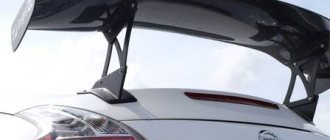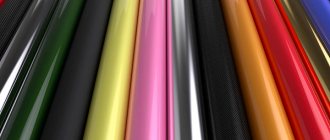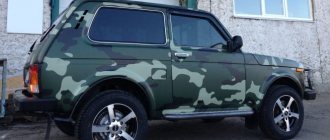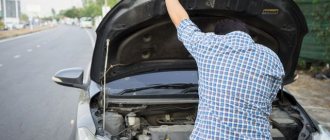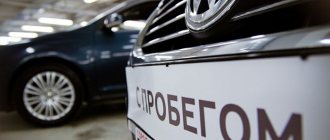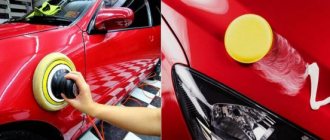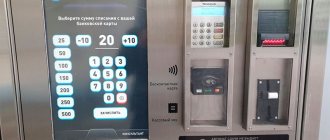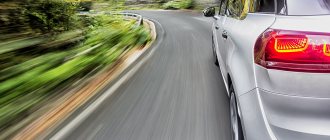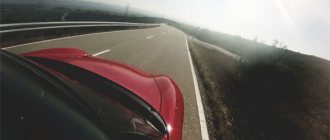A beautiful, neat, bright sample, as if it had just come from the factory, drops in price significantly if it has already been in an accident. Knowledgeable resellers restore such cars in no time and present them to the buyer in the best possible way. Sometimes, at first glance, you won’t notice what an almost brand new car can hide inside. And the attractive price compared to other cars with visible chips will immediately push you to buy. The classic phrase will add excitement: “I wanted to sell it for 500, but I’ll give it to you for 470...”.
Refurbished cars are a tasty morsel for dishonest sellers. Resellers, private owners, car dealerships, and even official dealers can sell a damaged car. Defining it is not so difficult. You should learn this, at least in order to reduce the price in time.
What is important to know
How to check whether a car is damaged or not? Before you start checking, we recommend that you take note of a few simple but important recommendations.
- If you understand cars at the gas and brake level, then it is better to invite a person with you who knows a little more about them. It will be calmer this way.
- It is advisable to inspect the car during the day, when good natural light is in your favor. Or take care of high-quality artificial light, which will allow you to distinguish waves on the surface and differences in paint tones if something happens.
- The car must be clean! Otherwise, it will be impossible to see the shortcomings.
- Take a thickness gauge with you to check where there is putty that is not used at the factory.
Also read: How to check a car with a thickness gauge
- Virtual tuning helps hide the most obvious nuances. Film everything that can be filmed. Additional elements may interfere with the real picture.
- If it is raining, snowing, or a hurricane outside, we recommend rescheduling the inspection to another day. You don't need any unnecessary interference.
- Never rely on the first impression of a car. And even more so, do not trust the opinion of those who understand little about this (for example, the advice of your wife).
Using a thickness gauge
A device called a thickness gauge will help you answer the question of whether your car is damaged. With its help, you can evaluate the condition of the paint coating on metal parts. There is no way to check plastic this way. The thickness gauge must be applied to the surface of the car and passed along it. The indicator should display equal values throughout the body. If there are significant deviations, this indicates a thick layer of putty under the paint, which invariably indicates repair after an accident. Not every car enthusiast has a thickness gauge on hand, so you can use a magnet to determine the thickness of the paint layer. If it does not stick to the body, then there is a rather large layer of putty hidden under the paint.
Self-check of a damaged car
So, you have decided on a car. The seller listed a complete list of the advantages of his “swallow”. All that remains is to check whether the car is actually damaged. Well, let's start the inspection.
- We study the geometry of the body. To do this, open and close all the doors in the car. Difficulties in opening can arise even with the slightest damage. Remember that a crooked body is the first sign of a car that has been repaired. Read how to check body geometry.
- To figure out the paint job, step back from the car a few meters and look at it from different angles. This way you can easily notice shades and transitions, which will indicate possible repairs after an accident. Read how to check the paint on a car.
- It's not just the appearance of a purchase that can give away evidence. Get as deep as possible - inspect everything under the hood of the car, look under the luggage compartment and don’t forget about the opening for the spare wheel. Paint marks are hidden in such hidden places.
- A non-standard or unpainted part that catches your eye is another sign that the body has been repaired. Take a good look at all fasteners. As a rule, cheaper paint is used for replacement, which will differ. If you suspect a replacement, compare them with the same ones on the other side of the case.
- If parts have been removed at least once for painting or repair, tool marks will be visible on them. Take a closer look at the screws, slots and bolts of the fasteners.
Also read: 6 ways to check the paint on your car
- Inspect the welding areas. During factory work, the seams and points look neat, the sealant is distributed perfectly. In other cases, the seam looks ugly and awkward.
- Go to the headlights. It happens that one headlight shines brighter than the other. However, there are no scratches on it. This suggests that, most likely, it was replaced.
- Examine the body completely. If you find traces of rust and corrosion, it means the car was in an accident. Damaged factory paint is not completely restored, and the affected parts begin to rust.
- Look closely at the openings between the fenders and adjacent parts, the bumper and the connecting parts. And also look at the location of the hood, headlights, trunk lid and doors relative to the body. The gaps between them in an undamaged car are the same on all sides, the doors open clearly and without any extraneous sounds.
- And in the end, to the forehead of the former owner of the car. The sly guy will immediately tell you the thousand and one pluses of the car, trying to hide the shortcomings. Or he will begin to broadcast something completely irrelevant.
Also read: What a visual inspection of a car will tell you
Why is this information needed?
The participation of a car in an accident significantly reduces its value on the secondary market, and if the damage was significant, even though restoration work was carried out, such a vehicle attracts mainly resellers. Violation of the body geometry reduces the service life of the car and poses a danger to the driver and passengers. In addition, some parts may have been replaced during restoration, and replacement is often performed using non-original parts. At the legislative level, there is no responsibility for the restoration and masking of car defects, so any malfunctions that arise after you purchase a damaged vehicle will fall solely on your shoulders.
Buying a vehicle is quite a serious undertaking and every future owner, despite the desire to save money, wants to purchase a serviceable car that will not cause trouble during operation. So, checking a car for participation in an accident is necessary for the following reasons:
- This information will help reduce the price tag on the car. Even minor damage discovered during the inspection, for example, small chips or scratches that do not in any way affect the comfort and safety of operation, is not a reason to refuse the purchase, but can serve as a significant reason for reducing the value of the car.
- Hidden body damage is often dangerous. A serious accident usually provokes deformation of the car body, which in turn can affect the technical characteristics of the vehicle, lead to the inability to set the wheel angle, uneven abrasion of the tread, change in the slope of the windshield and other unpleasant consequences that can subsequently cause another accident. Even with thorough repairs, it will not be possible to restore the car to factory condition, but an inexperienced motorist will not be able to determine “by eye” the presence of well-disguised defects, which is what they are counting on.
- Even minor damage to the paintwork of a car affects the condition of the body in the future; damaged areas are more susceptible to corrosion, which already does not spare cars, and damaged ones in particular.
- Subsequent repair costs. If you don’t bother much with restoring the car, focusing mainly on hiding defects, soon the components and assemblies of the car may require repeated repairs.
- There is a small chance of resale of the car. If you are unlucky enough to buy a car restored after a major accident, you can subsequently sell it only for spare parts or you will have to “sell” it to another ignorant buyer.
Every motorist expects to purchase a reliable car that will last for a year without the need to regularly look under the hood, and will not fail after just a few kilometers. Of course, you can buy a used car for mere pennies, but subsequent costs can hit your wallet hard.
If we are talking about a minor accident that did not cause damage to the structural geometry of the body and internal mechanisms, and the repair was carried out efficiently, purchasing a damaged car can still be considered.
Checking a car for an accident using online services
The ability to independently inspect a used car can often help out when purchasing. However, this is not always the case. Even specialists can hardly distinguish the tricks of real pros. But it is not all that bad. You can find out whether the car has been in an accident using the Autocode service. At the moment, this is one of the few services that offers a full report on your car by state. number without using the vin. By paying a symbolic amount of 349 rubles, you will receive detailed information about the vehicle, starting from the history of registration actions and ending with its participation in accidents. you will see the following information:
- How many times has the car been involved in an accident? The report will include all recorded cases.
- Date of accident - how long ago the car was wrecked.
- Type of accident. How and under what circumstances the car became involved in the incident.
- Damage received. You will find out which parts of the car were damaged.
In addition, you will find out if the owner contacted the insurance company after the accident. The report provides a calculation of insurance repair work, which describes in detail:
- calculation date;
- Document Number;
- recorded mileage;
- cost of repair work;
- damaged car parts;
- required type of repair.
Autocode is suitable for you if you need to unlock one or more cars. If you constantly check a large number of cars, the “Autocode Pro” unlimited car check service is suitable for you. Subscription to unlimited car checks is 2,500 rubles per month. At the same time, “Autocode Pro” allows you to add comments to reports, create your own lists of liquid vehicles, quickly compare options and store data about cars in an orderly form.
Tire wear
To confirm this fear, look at the rear tires. Usually, when the side members are damaged, the car begins to “eat rubber,” that is, uneven tire wear appears, caused by the inability to properly install the wheels. The rear beam is not adjustable, and wear is most often noticeable on the rear wheels. If the tread is noticeably worn on the sides with relatively intact fender liners, it means that the body is really distorted and such a car cannot be taken.
Article on the topic
False misconceptions. What should you not be afraid of when buying a used car?
Evgeniy Dyubakov, Head of the service department “Independence CARFIX – Body Repair Center”
If you are buying a used car, there are many ways to check its actual condition. For example, go to any dealership and carry out diagnostics using specialized equipment. Diagnostics are necessary not only to detect any damage, but also to assess the wear and tear of the car as a whole. The car needs to be inspected as a whole, because it could be broken from any side, for example, there are cars with roof repairs. Of course, there are some signs by which you can determine whether a car has been repaired. You should be alerted, for example, to bulging glue or the fact that the vehicle is being sold with significant mileage, it is more than one year old, but it shines like new, and there are no signs of use on it. This is the main indicator that the car has been repainted. In order to confirm this fact, there are special devices that allow you to measure the thickness of the paintwork. During diagnostics, the indicator where the thickness of this coating is minimal is taken as the standard. A discrepancy of 10-15% maximum is possible. Exceeding the indicator means that the car was either painted or repaired. Please note that the device does not work on aluminum and plastic parts. Accordingly, you should pay attention to such exterior elements as door openings and fuel tank flap openings. By these places you can determine the application of a second layer of paint or varnish. This can also be installed using removable parts: front fenders and hood, trunk lid. Pay attention to the fastening points - it is not always possible to re-screw the bolt exactly according to its mark. If the mark does not match, it means the part was removed - and, as a rule, this could be done for repairs. Therefore, it is necessary to understand why the owner needed this repair. All modern body repair technologies are aimed at preserving the pre-repair appearance of the car. Therefore, a person who is not a specialist in this field will not be able to independently determine whether the body has been repaired. As a rule, this can only be detected by a specialist who knows well how to “hide” traces of body repairs. If you want to be confident in the car you are buying and decide to carry out diagnostics, then it is better to contact a car body repair specialist at a specialized center.
Step-by-step check of car body geometry
Body geometry is the correct location of control points on the body of your car. These points are set by the manufacturer; there must be strictly specified distances between them.
What if the audit reveals problems? The car may drift while driving, reducing safety. The main thing is that it is a sign of an accident or long-term use.
Why is it important to check body geometry?
The body is capable of deforming on its own : this is due to bumps, speed bumps, and heavy loads. It is recommended to check the body geometry once a year. If you track problems in time, it will be easier to fix them.
If you run the situation:
Signs of geometry violation
The first signs of problems : when hanging up, the door jams, the body plays and creaks on potholes.
Worse : the doors don't close properly, adjusting the locks doesn't help.
Bad : the car wanders at speed, the wheel alignment is normal.
Self check
To independently check the gaps and distances, you will need a table of factory indicators between the control points.
How to check geometry in the service
Did your self-check show problems with distances between control points or gaps? You need to take the car to a service station. They will check it with special equipment.
laser measurement systems at service stations : they will show which points have deviated from factory standards and by how much. For example, the right glass moves up and to the left or the displacement of one of the side members.
An example of how such a device works in the video.
How can you restore the geometry of a car?
You cannot restore the geometry yourself without experience. You'll only make it worse. It is necessary to estimate the cost of restoration work and how safe the car will be after repair.
There are two options for work:
If the technician has extensive experience and good equipment, the price will not be lower than the service work.
A service with a bench for pulling the body will not be cheap, but it will make the car close to ideal.
